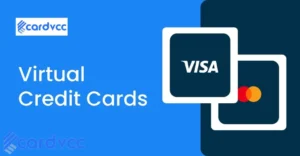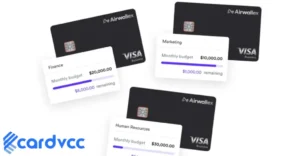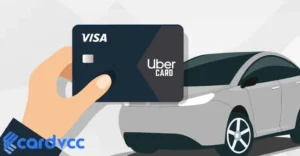Yes, credit cards can charge interest on interest. This is known as compound interest.

Credit card companies often calculate interest daily. If you carry a balance, they add interest to your principal amount. This new total then accrues more interest. Over time, this can significantly increase your debt. Understanding how compound interest works is crucial for managing credit card debt.
Paying off your balance in full each month helps you avoid these charges. Always read your credit card agreement to know the terms. This knowledge empowers you to make informed financial decisions. Managing your credit wisely can save you money and stress.
Introduction To Credit Card Interest
Credit card interest can confuse many people. Understanding it helps you manage debt. Credit card companies charge interest on borrowed money, which can grow over time. Knowing how it works is important. It helps you make smart financial decisions.
Basics Of Credit Card Interest
Credit card interest is the cost of borrowing money. When you don’t pay your full balance, interest adds up. Each card has a different interest rate. This rate is called the Annual Percentage Rate (APR). The APR shows how much interest you pay yearly.
Interest can be simple or compound. Simple interest charges are only for the principal amount. Compound interest charges on both the principal and the interest. This means you pay interest on interest.
Types Of Interest Rates
Credit cards can have different types of interest rates. Here are the main types:
- Purchase APR: This is the interest rate on new purchases.
- Balance Transfer APR: This rate applies when you move debt from one card to another.
- Cash Advance APR: This is the rate for withdrawing cash using your credit card.
- Penalty APR: This higher rate applies if you miss payments.
Here is a table to summarize these rates:
| Type of APR | Description |
|---|---|
| Purchase APR | Interest on new purchases |
| Balance Transfer APR | Interest on transferred balances |
| Cash Advance APR | Interest on cash withdrawals |
| Penalty APR | Higher interest due to missed payments |
Understanding these rates can save you money. Knowing the basics helps you avoid high interest charges.
Understanding Compound Interest
Compound interest can grow debt quickly. Knowing how it works can help you manage credit card payments better.
What Is Compound Interest?
Compound interest means you pay interest on the original amount and on interest that adds up over time. It grows faster than simple interest.
| Simple Interest | Compound Interest |
|---|---|
| Interest on principal only | Interest on principal and past interest |
| Growth is linear | Growth is exponential |
| Easy to calculate | More complex calculation |
With compound interest, you pay interest on previous interest. This makes the debt grow faster.
How It Applies To Credit Cards
Credit cards often use compound interest. This means your debt can grow rapidly. If you don’t pay off your balance, interest charges add up.
- Interest applies to your balance.
- New interest adds to the balance
- Next month’s interest is on the new balance
This cycle can make it hard to pay off debt. Paying off your balance each month helps avoid compound interest.
Here is an example:
- You owe $1000 on your credit card.
- The interest rate is 20% per year.
- Each month, you don’t pay, and more interest is added.
By understanding compound interest, you can make better financial decisions and keep your debt under control.
Interest On Interest Explained
Credit card interest can be confusing. One aspect is interest on interest. This is where unpaid interest accumulates and generates its interest. Understanding this helps manage your credit card debt better.
Mechanism Of Charging Interest On Interest
Credit cards charge interest daily. If you carry a balance, interest is added to it. This new balance includes the original amount and the interest. The next day’s interest is calculated on this new balance.
For example, let’s say you owe $1,000. Your daily interest rate is 0.05%. On the first day, you are charged $0.50. Your new balance is $1,000.50. The next day’s interest is based on $1,000.50, not $1,000. This is how interest on interest works.
Examples And Scenarios
Imagine you owe $2,000 on your credit card. The annual interest rate is 18%. This means a daily interest rate of about 0.049%. Let’s see how interest on interest affects your balance over five days.
| Day | Balance | Daily Interest | New Balance |
|---|---|---|---|
| 1 | $2,000.00 | $0.98 | $2,000.98 |
| 2 | $2,000.98 | $0.98 | $2,001.96 |
| 3 | $2,001.96 | $0.98 | $2,002.94 |
| 4 | $2,002.94 | $0.98 | $2,003.92 |
| 5 | $2,003.92 | $0.98 | $2,004.90 |
As you can see, the interest amount grows slightly each day. This is due to interest being charged on the previous day’s interest. Over time, this can cause your debt to grow faster.

Legal Aspects
Understanding the legal aspects of credit card interest can be confusing. This section delves into the regulations and consumer protections.
Regulations And Laws
Credit card companies must follow strict regulations and laws. These laws protect consumers from unfair practices.
The Truth in Lending Act (TILA) is a key regulation. TILA requires clear disclosure of terms and interest rates. This law helps consumers understand the cost of using credit.
Another important law is the Credit CARD Act of 2009. It provides additional protections. This law limits how and when fees can be applied. It also requires more notice for interest rate changes.
Consumer Protection
Consumer protection is crucial in credit card interest practices. The Consumer Financial Protection Bureau (CFPB) oversees these protections. The CFPB ensures credit card companies follow the rules.
Consumers have the right to dispute charges. They also have the right to clear explanations of charges. If a company violates these rights, consumers can file a complaint with the CFPB.
Consumers should always review their credit card statements. Understanding the terms and conditions can prevent unexpected charges. Education is key to avoiding interest on interest.
Impact On Cardholders
Credit cards can charge interest on interest. This practice affects cardholders greatly. Understanding its impact is crucial for better financial health.
Financial Consequences
Interest on interest can snowball debts quickly. The monthly balance grows faster than expected. This leads to higher payments over time.
| Initial Balance | Interest Rate | Accumulated Debt |
|---|---|---|
| $1,000 | 15% | $1,150 |
| $1,150 | 15% | $1,322.50 |
As shown in the table, debt can grow rapidly. This makes it harder to clear the balance.
Managing Debt
Managing debt is key to financial stability. Use these tips to control credit card debt:
- Pay more than the minimum amount due.
- Track your spending regularly.
- Set a budget to avoid overspending.
Also, consider balance transfer offers. These can help lower your interest rate. But, read the terms carefully before proceeding.
Avoiding Excessive Interest
Credit cards can charge interest on interest, leading to high costs. Avoiding excessive interest is crucial for financial health. Here are some strategies to help you manage credit card interest effectively.
Effective Payment Strategies
Paying your credit card balance in full each month is the best way to avoid interest. If you can’t pay in full, aim to pay more than the minimum amount.
- Set Up Automatic Payments: Ensure you never miss a payment.
- Pay More Than Minimum: Reducing your balance faster will save you money.
- Make Multiple Payments: Paying twice a month can lower your average daily balance.
Using these strategies can help you manage your debt and reduce interest charges.
Using Balance Transfers
Balance transfers can be a useful tool for managing credit card debt. They allow you to move high-interest debt to a card with a lower rate.
| Step | Description |
|---|---|
| 1 | Find a Low-Interest Card: Look for offers with 0% APR for a limited time. |
| 2 | Transfer Your Balance: Move your existing balance to the new card. |
| 3 | Pay Off Debt Faster: Use the lower interest period to pay down your debt. |
Balance transfers can reduce the interest you pay and help you become debt-free faster. Just be sure to read the terms and conditions carefully.
Comparing Credit Card Offers
Choosing the right credit card can be tricky. You need to compare offers. Different cards have different benefits. Some have low interest rates. Others offer rewards or cash back. It’s important to understand which card fits your needs best.
Finding Low-interest Cards
Low-interest credit cards save you money. They have a lower APR (Annual Percentage Rate). This means you pay less interest on your balance. To find these cards, look for special promotions. Some cards offer 0% APR for an introductory period. This can be six months or even a year.
Here is a quick comparison:
| Card Name | Intro APR | Regular APR |
|---|---|---|
| Card A | 0% for 12 months | 14.99% – 24.99% |
| Card B | 0% for 18 months | 15.99% – 25.99% |
| Card C | 0% for 15 months | 13.99% – 23.99% |
Understanding Terms And Conditions
Before you apply, read the terms and conditions. These tell you how the card works. Look for fees and penalties. Some cards charge annual fees. Others may have late payment fees. It’s also important to understand the interest rates.
- Annual Fee: Some cards charge this yearly.
- Late Payment Fee: This is charged if you miss a payment.
- Balance Transfer Fee: This is charged for transferring balances from other cards.
Pay attention to how interest is calculated. Some cards charge interest on interest. This can increase your debt quickly. Always read the fine print. Knowing these details helps you avoid surprises.

Frequently Asked Questions
Can Credit Cards Charge Interest On Interest?
Yes, credit cards can charge interest on interest. This is known as compound interest, where unpaid interest accumulates and further interest is charged on it.
How Does Credit Card Interest Compound?
Credit card interest compounds daily. This means interest is calculated on the total balance, including any previously accrued interest, each day.
What Is Compound Interest In Credit Cards?
Compound interest in credit cards occurs when interest is charged on both the principal balance and any accrued interest, increasing your debt faster.
Can I Avoid Paying Interest On Interest?
Yes, paying your full balance on time each month prevents interest from compounding, avoiding additional interest charges on accrued interest.
Conclusion
Understanding how credit card interest works is crucial. Interest on interest can quickly escalate debt. Always read the terms and stay informed. Manage your credit responsibly to avoid unexpected charges. Stay proactive, pay on time, and keep your financial health in check.







